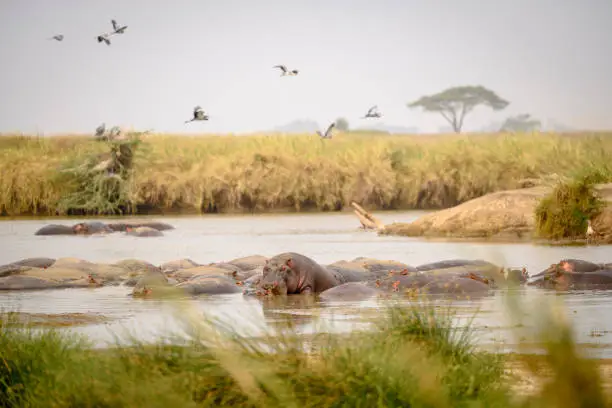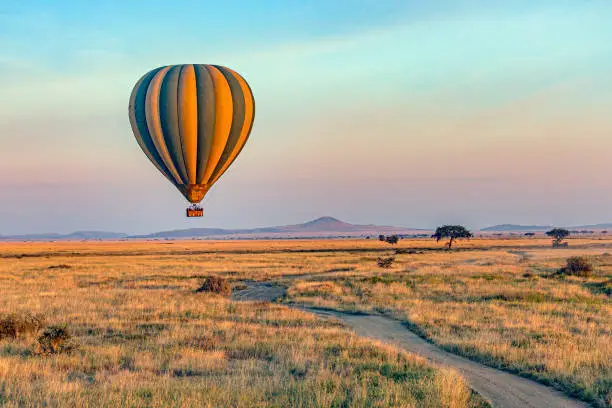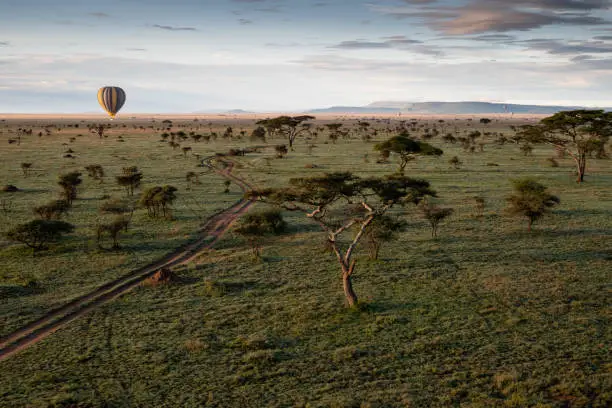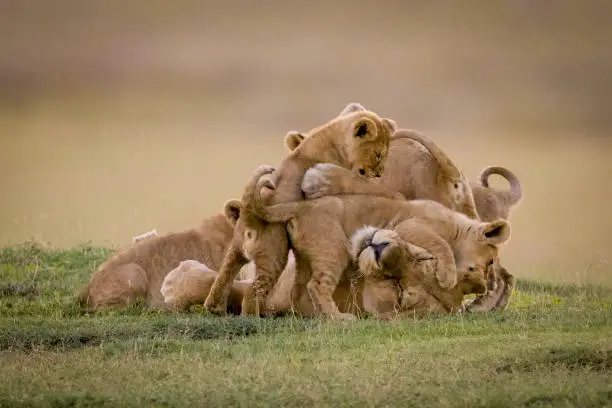Serengeti National Park
A safari in Serengeti National Park is more than a vacation – it’s an immersion into the heart of wild Africa. From the roaring lions and thundering hooves of migrating herds to serene sunsets and cultural encounters, Serengeti stirs the soul and leaves lifelong memories
Welcome to Serengeti National Park, the most spectacular safari destinations in the world. Located in northern Tanzania, Serengeti is synonymous with classic African safaris, abundant wildlife, and breathtaking landscapes. For those dreaming of perfect African holiday this park delivers an unforgettable experience like witnessing the Great Wildebeest Migration, photographing predators in action, or relaxing under the stars.
Serengeti National Park is situated in northern Tanzania, stretching over 14,750 square kilometers of diverse terrain. The park borders Kenya’s Maasai Mara Reserve to the north and the Ngorongoro Conservation Area to the south.
The word “Serengeti” comes from the Maasai word Siringet, meaning “endless plains,” and that’s exactly what you’ll find – vast grasslands dotted with acacia trees, rolling hills, seasonal rivers, and dramatic rocky outcrops known as kopjes.
Serengeti is famous for its rich biodiversity and unmatched game-viewing opportunities. It is home to all members of the Big Five: lions, leopards, elephants, rhinos, and buffalo. But that’s just the beginning.
You’ll also see:
- Cheetahs sprinting across the plains
- Hyenas and jackals scavenging after a kill
- Massive herds of wildebeest and zebra
- Giraffes grazing on umbrella acacias
- Hippos wallowing in muddy pools
- Crocodiles lurking in rivers
- Gazelles, impalas, warthogs, topis, and more
No matter when you visit, wildlife sightings are guaranteed.
With over 500 bird species, Serengeti is a top destination for bird enthusiasts. Whether you’re a seasoned birder or a casual observer, you’ll be impressed by the variety.
Highlights include:
- Secretary birds
- Ostriches (the world’s largest bird)
- Kori bustards
- Lilac-breasted rollers
- Vultures, eagles, and hawks
- Flamingos at nearby seasonal lakes
The best time for birdwatching is during the wet season (November to April) when migratory birds arrive.
For Wildlife Viewing:
The dry season (June to October) is the best time for spotting animals easily around water sources. The migration is also in full swing during these months.
For Birdwatching and Green Landscapes:
The wet season (November to May) offers beautiful scenery, fewer tourists, and excellent birdwatching. Calving season in February is also ideal for witnessing predator-prey drama.
The crown jewel of Serengeti is the Great Migration, a breathtaking journey of over 1.5 million wildebeest, hundreds of thousands of zebras, and other grazers moving in a circular path in search of water and fresh grass.
Key Migration Events by Season:
- January – March: Calving season in the Ndutu area (southern Serengeti). Thousands of wildebeest calves are born daily. Great for predator action.
- April – June: Herds move northwest through the Western Corridor, crossing the Grumeti River.
- July – October: Famous Mara River crossings in the northern Serengeti as herds enter the Maasai Mara.
- November – December: Southward return to Serengeti’s lush southern plains.
Timing your visit with the migration is a major highlight!
Whether you’re planning a luxury, honeymoon, a family adventure, or a budget backpacking trip, Serengeti can be tailored to suit your preferences.
Many local companies, such as Local Crew Expeditions, offer:
- Custom safari itineraries based on your travel dates and interests
- Private guides (including female guides upon request)
- Add-ons to Zanzibar, Kilimanjaro, or the southern safari circuit
- Options for solo travelers, couples, and groups
Packing List
- Clothing: Pack neutral tones (khaki, beige), long sleeves, and layers.
- Gear: Bring a camera with zoom lens, binoculars, sunscreen, hat, and insect repellent.
- Health: Take anti-malaria medication and carry a basic first-aid kit.
- Cash: Have some USD for tips or souvenirs in remote areas.
Things to Do in Serengeti
Serengeti is not just about game drives – although those are the main activity. Here are other unforgettable experiences:
- Hot Air Balloon Safari: Soar above the plains at sunrise and enjoy a champagne breakfast.
- Walking Safaris: Explore on foot with a trained guide in select areas.
- Photographic Safaris: With professional guides and custom vehicles.
- Cultural Visits: Meet the Maasai and learn about their traditional way of life.
You can reach Serengeti by road or air.
By Air:
- Daily flights from Arusha, Zanzibar, or Kilimanjaro airports.
- Main airstrips: Seronera, Kogatende, Grumeti, Ndutu (seasonal).
By Road:
- Most travelers start from Arusha and drive through Ngorongoro Conservation Area (approx. 7-8 hours to central Serengeti).
Serengeti caters to all travelers with a variety of lodging options, from budget campsites to luxury lodges. Here’s a breakdown:
Budget:
- Public campsites
- Basic mobile tented camps
Mid-Range:
- Permanent tented camps
- Comfortable safari lodges
- Examples: Kati Kati Tented Camp, Serengeti Heritage Camp
Luxury:
- High-end lodges with pools, spas, and gourmet dining
- Examples: Four Seasons Serengeti, Serengeti Serena Lodge, Nomad Lamai Camp




